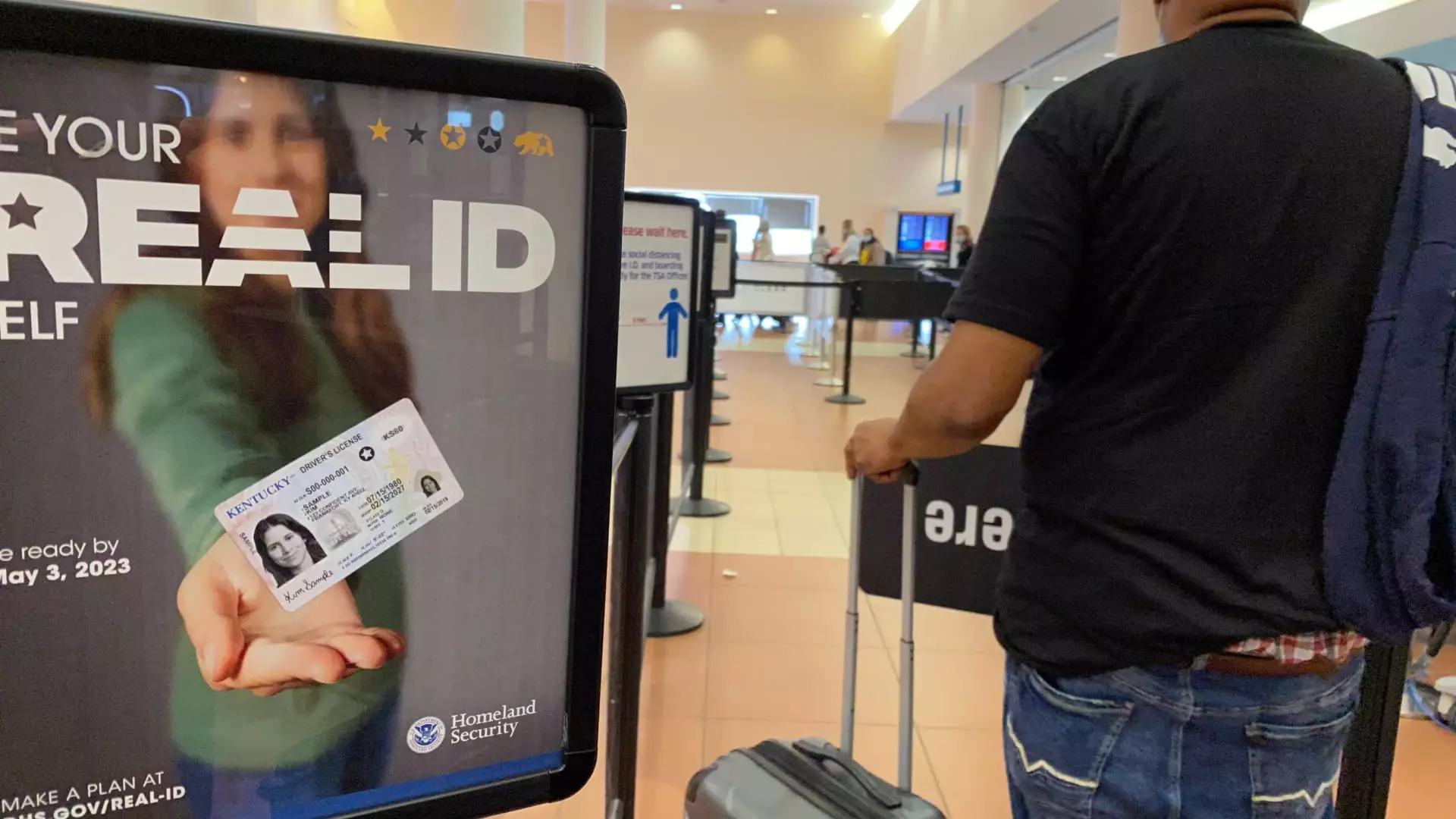As the clock ticks down to May 7, a significant shift in how we navigate the skies approaches: the federal government is finally putting the long-delayed Real ID enforcement into action. For travelers, this isn’t merely a bureaucratic hurdle; it represents a poignant reminder of how security has consumed every aspect of our lives post-9/11. The stakes have never been higher in terms of proving one’s identity—now becoming an almost surreal experience as we prepare to show our papers before boarding domestic flights.
The Real ID Act emerged from a collective push for greater control and security, ostensibly to prevent individuals with fraudulent identification from accessing commercial flights. But as TSA officials report that 81% of travelers are already compliant, it raises urgent questions: Has the campaign to inform the public been effective, or does this high compliance rate mask a deeper issue of accessibility and awareness? For some, the process of obtaining a compliant ID feels increasingly like wrestling with a bureaucratic monster designed to keep the inconvenient and unprepared out of sight rather than making air travel safer for all.
Delays, Denials, and Desperation
John Essig, the TSA’s security director for the New York City area, has urged travelers to act fast in securing their Real IDs, pointingly highlighting the limited appointment slots available at motor vehicle departments. This frantic race against time places an undue burden on citizens already grappling with daily stressors. With systemic issues compounding, such as workforce shortages resulting from the pandemic, many find themselves at the whims of an overtaxed system with little recourse.
In a world where we often hear that “the deadline is non-negotiable,” it’s alarming to face the prospect of refusing entry into the security checkpoint simply due to the lack of proper identification. This reflects a growing trend in governance, where personal freedoms are compromised under the guise of national security. One can’t help but wonder if the emphasis on security and compliance has gone too far—what about essential rights such as access to travel or the ability to move freely without government pawing through our paperwork?
The Paradox of Progress: Compliant but Confounded
Interestingly, while the TSA emphasizes the need for compliance, many travelers are left in the dark about what constitutes an accepted form of identification. The distinction between Real IDs and other travel documents, like a passport or a green card, is neither straightforward nor easily understood, sowing confusion among the very citizens they are intended to protect. Furthermore, the identification feature that notifies users of compliance—be it a gold star or California’s yellow bear—adds more complexity than clarity to travelers’ experiences.
The intention behind the Real ID standards may be rooted in earnest attempts to bolster safety, but a critical examination reveals that this policy shift disproportionately affects certain populations, particularly those less affluent or lacking access to the necessary resources for obtaining compliant IDs. How ironic it is that heightened security measures reflect the very insecurities they aim to rectify, further entrenching social inequality.
Airline Vigilance: Can We Trust the System?
Airlines have begun a barrage of notifications, warning passengers about the impending requirements, but this feels like a half-hearted endeavor. The mere presence of banners and QR codes seems to offer little more than lip service to an important change. As we navigated the complexities of the pandemic, many learned that trust in our public infrastructure and services can often fall short, leaving individuals scrambling in these last moments.
When Frontier Airlines displays warning banners on their website, is it an act of transparency, or does it symbolize their attempts to evade criticism by laying the onus on the customer? Yes, we must comply with federally mandated requirements, but it feels eerily transactional when airlines adopt a “you’ve been warned” approach, without truly assisting in the transition.
Identity in Limbo: What Lies Ahead?
As our society leans towards more stringent identification protocols, it’s critical to reflect on what this means for our collective identity. The TSA has insisted on the importance of identity verification as the linchpin of national security, yet the overarching message remains one of caution—a warning that those without proper identification could face significant delays or be turned away entirely.
While we march toward a world where every move seems inflected by regulation, we must scrutinize whether this needed security hasn’t devolved into a surveillance state, subtly eroding our freedoms in exchange for an illusory sense of safety. In this new landscape, are we truly prepared to uphold our rights, or have we quietly consented to an unsettling future where identity transcends beyond mere card verification? Only time will tell, but May 7 serves as a pivotal checkpoint in more ways than one.

